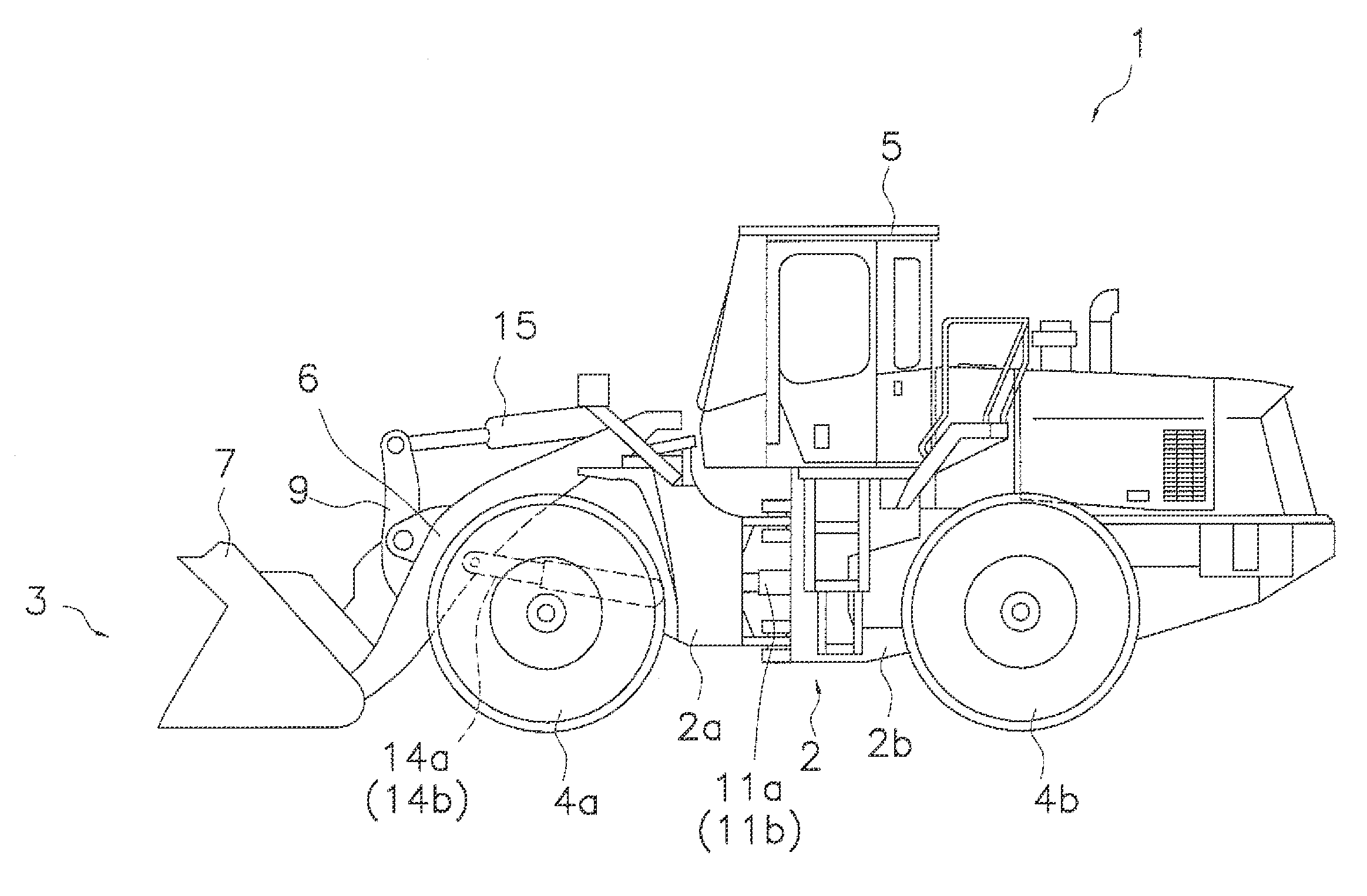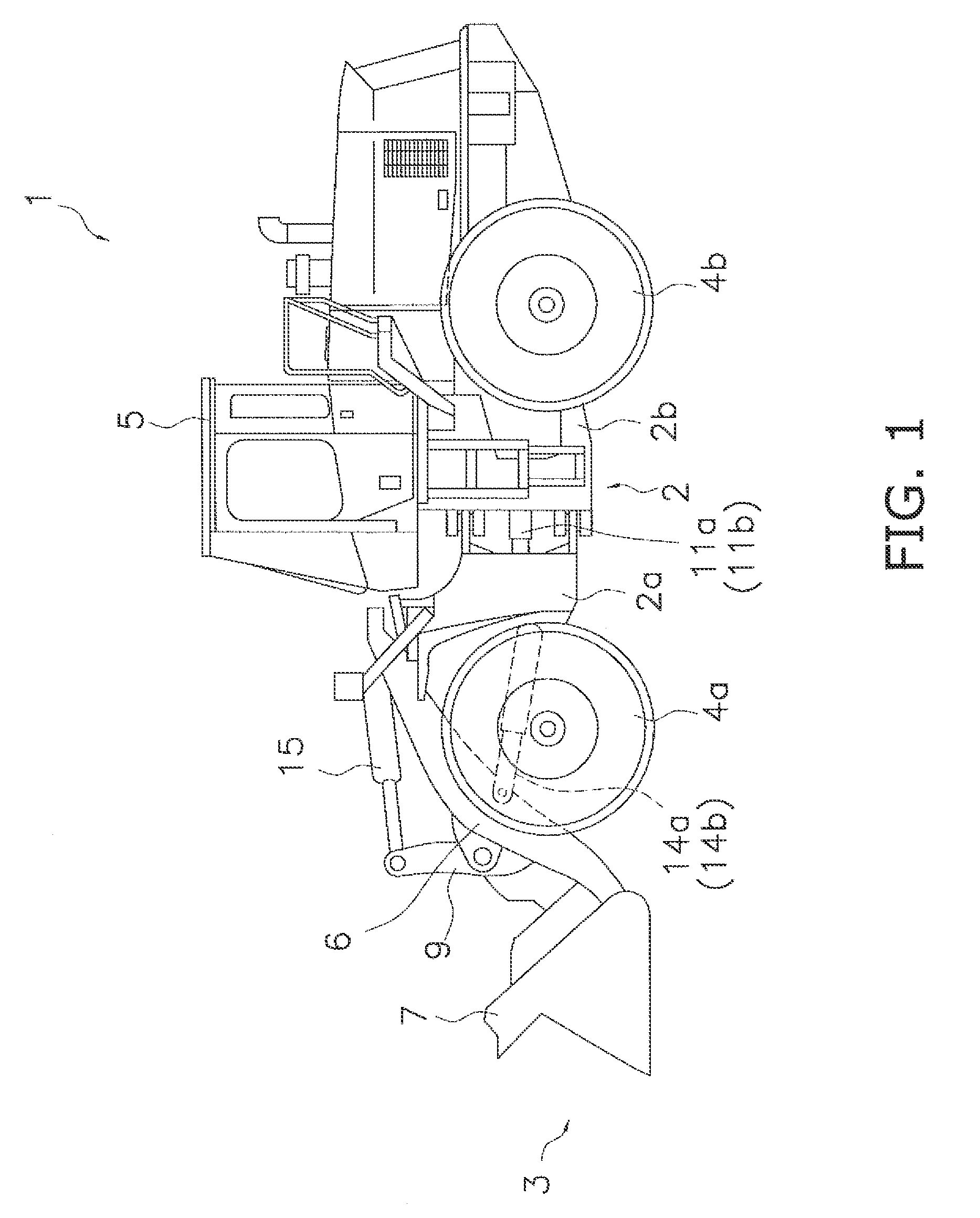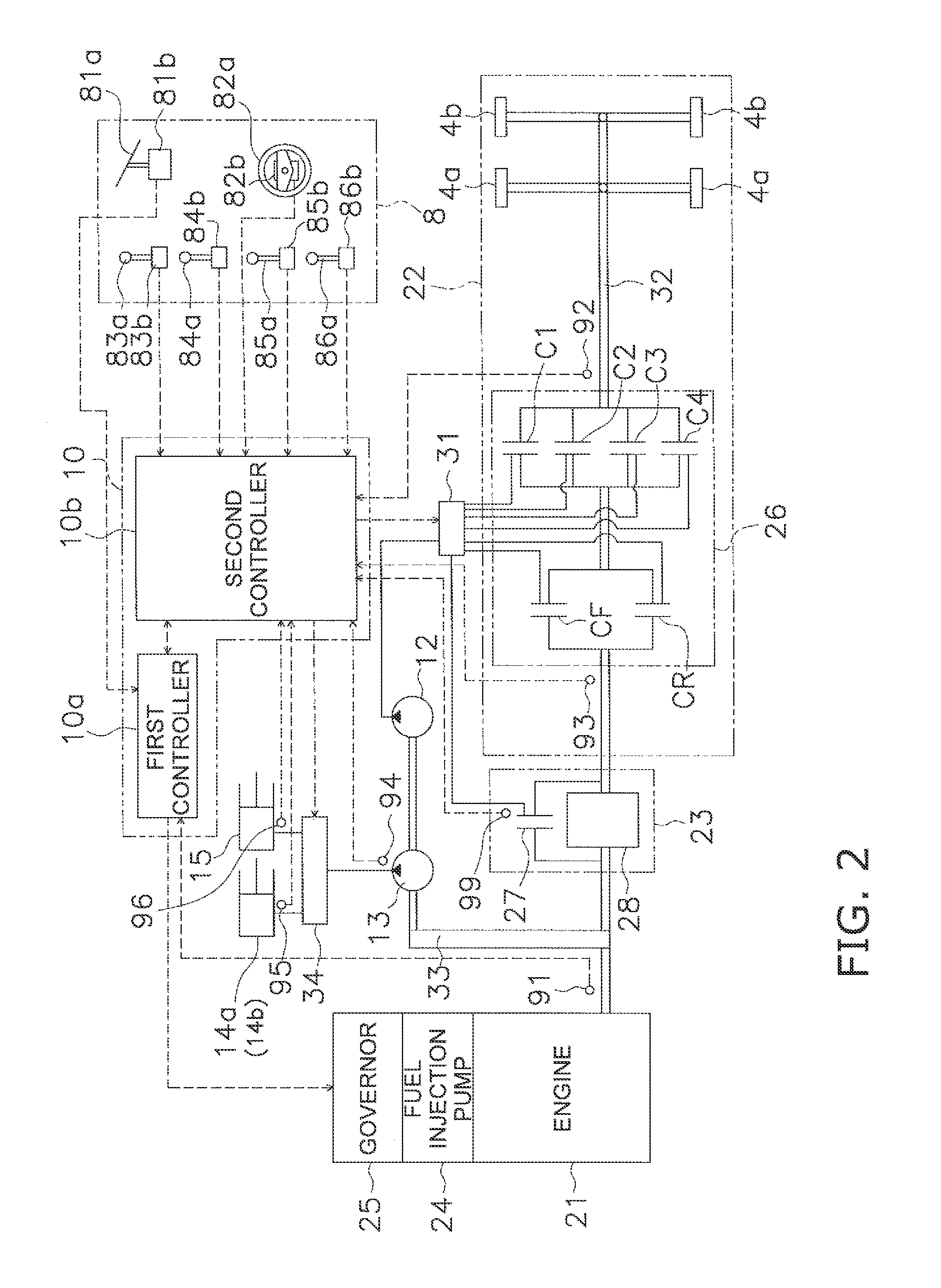Work vehicle and method of controlling the same
a technology of work instruments and clutches, applied in the field of work vehicles, can solve the problems of reducing the action speed reducing reducing the efficiency of the work instrument, so as to inhibit the reduction of the life duration of the lock-up clutch, fuel consumption can be enhanced, and torque transmission efficiency can be further enhanced
- Summary
- Abstract
- Description
- Claims
- Application Information
AI Technical Summary
Benefits of technology
Problems solved by technology
Method used
Image
Examples
Embodiment Construction
[0027]FIGS. 1 and 2 illustrate a work vehicle 1 according to an exemplary embodiment of the present invention. FIG. 1 is an external view of the work vehicle 1, while FIG. 2 is a schematic configuration view of the work vehicle 1. The work vehicle 1 is a wheel loader. The work vehicle 1 can be self-propelled by rotational driving of front wheels 4a and rear wheels 4b. Further, the work vehicle 1 can perform a desired work using a work instrument 3.
[0028]As illustrated in FIG. 1, the work vehicle 1 includes a vehicle body frame 2, the work instrument 3, the front and rear wheels 4a and 4b and a cab 5.
[0029]The vehicle body frame 2 includes a front vehicle body part 2a and a rear vehicle body part 2b. The front and rear vehicle body parts 2a and 2b are coupled to each other while being pivotable in a transverse (right-and-left) direction. A pair of steering cylinders 11a and 11b is provided astride the front and rear vehicle body parts 2a and 2b. The steering cylinders 11a and 11b are...
PUM
 Login to View More
Login to View More Abstract
Description
Claims
Application Information
 Login to View More
Login to View More - R&D
- Intellectual Property
- Life Sciences
- Materials
- Tech Scout
- Unparalleled Data Quality
- Higher Quality Content
- 60% Fewer Hallucinations
Browse by: Latest US Patents, China's latest patents, Technical Efficacy Thesaurus, Application Domain, Technology Topic, Popular Technical Reports.
© 2025 PatSnap. All rights reserved.Legal|Privacy policy|Modern Slavery Act Transparency Statement|Sitemap|About US| Contact US: help@patsnap.com



